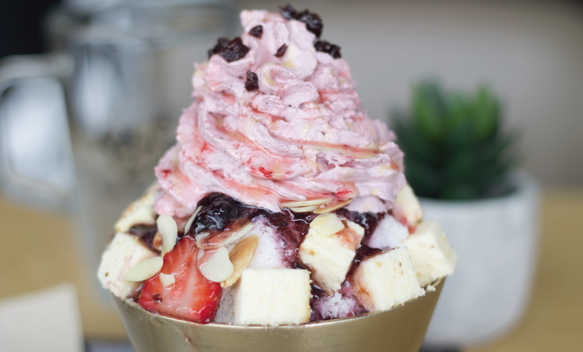Summer is here! And as much as you love getting that perfect tan this summer, we also know you’re looking forward to a cold, refreshing treat to cool you off (because this heat is only acceptable if you’re by the beach).
When bingsu became famous in South Korea roughly five years ago, Guwoon Jung decided to bring this unique and healthy dessert concept to the Philippines. So, after careful planning and delicious experimentation, Jung opened the very first Café Seol Hwa branch on March 2015 at Century City Mall in Poblacion, Makati City.
According to Jung, “seol hwa” means “snow flower,” which is their way of branding their beautiful and delicious dessert creations.
For Jung, the success of Café Seol Hwa is rooted in two major differences of their bingsu compared to other bingsu desserts and even the Filipino halo-halo. First, every component in Café Seol Hwa’s bingsu are either naturally grown (fruits, nuts) or handmade by Jung herself. Second, the variety of toppings offered at Café Seol Hwa is extensive, which means they can cater to all sorts of diners—from fruit lovers to chocoholics and even lacto-vegetarians.

If you’re planning to drop by Café Seol Hwa (as you should), make sure to try their best-selling Mango Cheesecake Bingsu (yes, Jung made the creamy cheesecake with just the right amount of sweetness and saltiness), Berry Cheesecake Bingsu (yes, that lip-smacking blueberry whipped cream is homemade, too), and the Brownie Bingsu (yes, she made the irresistibly fudgy brownies, too).
Diners are also encouraged to try their Dduk Bok Gi (or tteokbuki) with a twist. Dduk bok gi is a popular Korean dish made of sweet and chewy rice cakes swimming in a spicy red sauce, but for that Café Seol Hwa twist, they added ramen noodles to make the dish a bit more substantial and filling.
Guests can choose from two levels of hotness: Gochujang, which is recommended for those who are not used to eating spicy fare (but take note: it still packs quite a chili punch!); and Yeobgi, which is, as they say, “Korean spicy.” According to Jung, yeobgi dduk bok gi is about three to four times spicier than gochujang.
Check out Cafe Seol Hwa’s list of branches here.





Reader Interactions